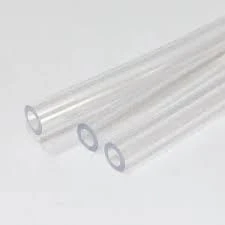syys . 03, 2024 03:05 Back to list
hdpe conduit pipe
The Benefits and Applications of HDPE Conduit Pipe
High-Density Polyethylene (HDPE) conduit pipe has emerged as a popular choice for various applications in different industries, particularly in telecommunications and electrical infrastructure. Its unique properties and advantages make it a preferred material for cable management and underground installations.
One of the most significant benefits of HDPE conduit pipe is its high resistance to environmental stress. Unlike traditional materials like PVC or metal, HDPE pipes are less prone to cracking, corrosion, or degradation from weather elements. This durability extends the lifespan of underground installations, ensuring that the conduit remains functional for many years with minimal maintenance. Additionally, HDPE is UV resistant, making it suitable for above-ground applications as well.
The Benefits and Applications of HDPE Conduit Pipe
The smooth inner surface of HDPE conduit pipe is another advantage, as it facilitates the quick and efficient pulling of cables. This is particularly important in telecommunication and electrical applications, where minimizing friction is crucial for ensuring that cables are installed without damage. The reduced friction also allows for longer cable runs, enhancing connectivity and efficiency.
hdpe conduit pipe

Environmental considerations are increasingly influencing the materials used in construction and infrastructure projects. HDPE conduit pipe is manufactured from recyclable materials, making it a more sustainable option. The manufacturing process results in lower carbon emissions compared to traditional materials. Furthermore, its long lifespan and resistance to environmental degradation contribute to a more sustainable lifecycle overall.
Another key aspect of HDPE conduit pipe is its cost-effectiveness. While the initial investment might be comparable to other materials, the long-term savings associated with reduced maintenance and replacement costs make HDPE a financially sound option. Its durability and resistance to various environmental factors mean fewer resources are spent on repairs and replacements, thus providing substantial cost savings over time.
In terms of applications, HDPE conduit pipe is widely used in telecommunications to protect fiber optic and copper cables from physical damage and environmental hazards. It is also utilized in electrical installations for power distribution and street lighting systems. Moreover, the versatility of HDPE allows it to be adapted for various other purposes, including water and gas distribution systems.
In conclusion, HDPE conduit pipe stands out as a superior choice for many infrastructural needs due to its durability, flexibility, and cost-effectiveness. Its environmental benefits further enhance its appeal, making it a forward-thinking solution for modern infrastructure projects. With the continued advancement of materials science, HDPE will likely play an increasingly critical role in the development of future utilities and communication networks.
-
Premium PVC-M Water Supply Pipe - Durable & Efficient
NewsAug.02,2025
-
Premium PP Welding Rod: GPT-4 Turbo Enhanced
NewsAug.01,2025
-
HDPE Drainage & Irrigation Pipe - Durable, Efficient Solutions
NewsAug.01,2025
-
Premium PVC Transparent Pipe: Durable & Clear Solutions
NewsJul.31,2025
-
High-Quality UPVC Electrical Pipe for Safe Wiring Solutions
NewsJul.30,2025
-
Premium PVC Pipe Fitting Supplier – Durable & Leak-Proof Solutions
NewsJul.30,2025

